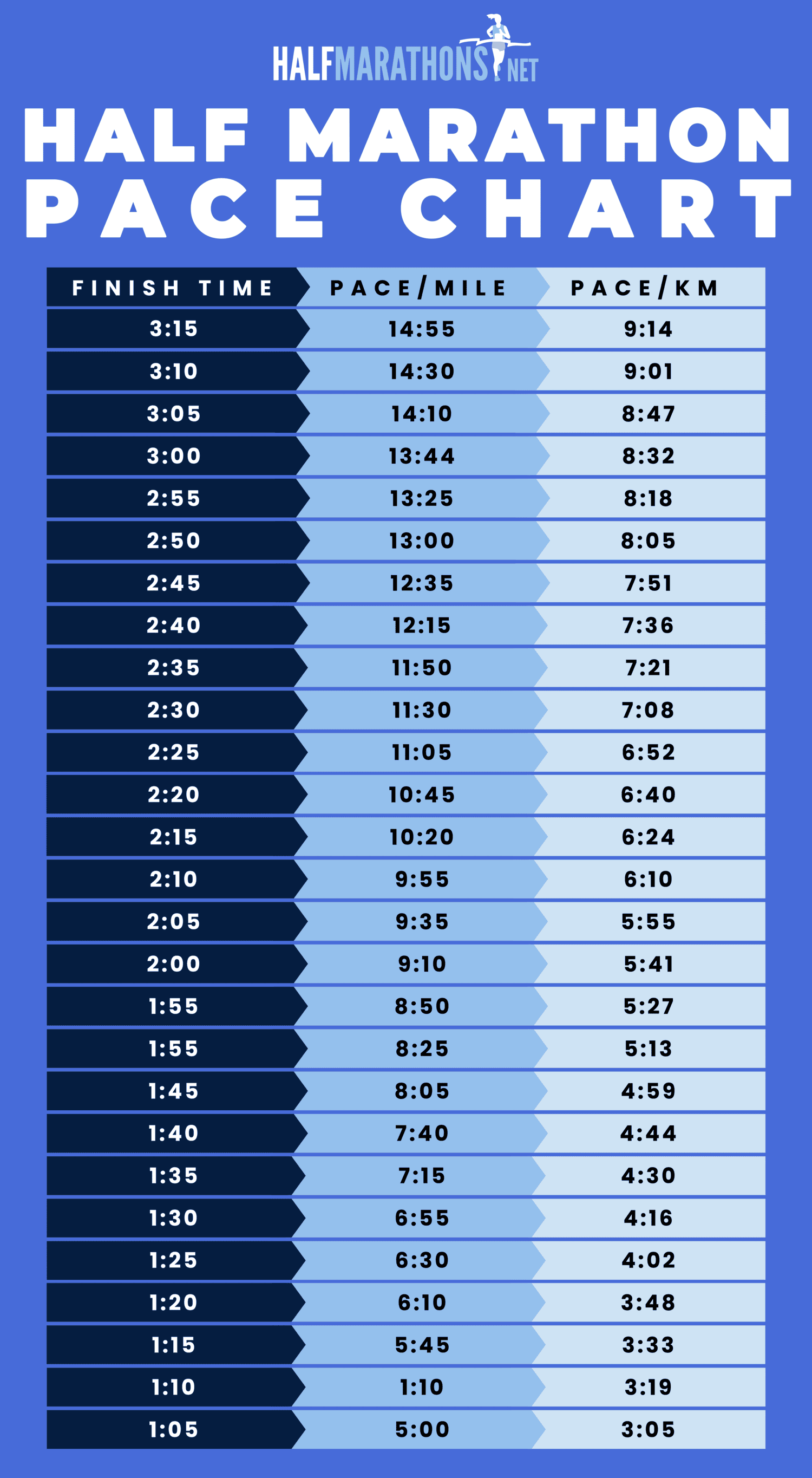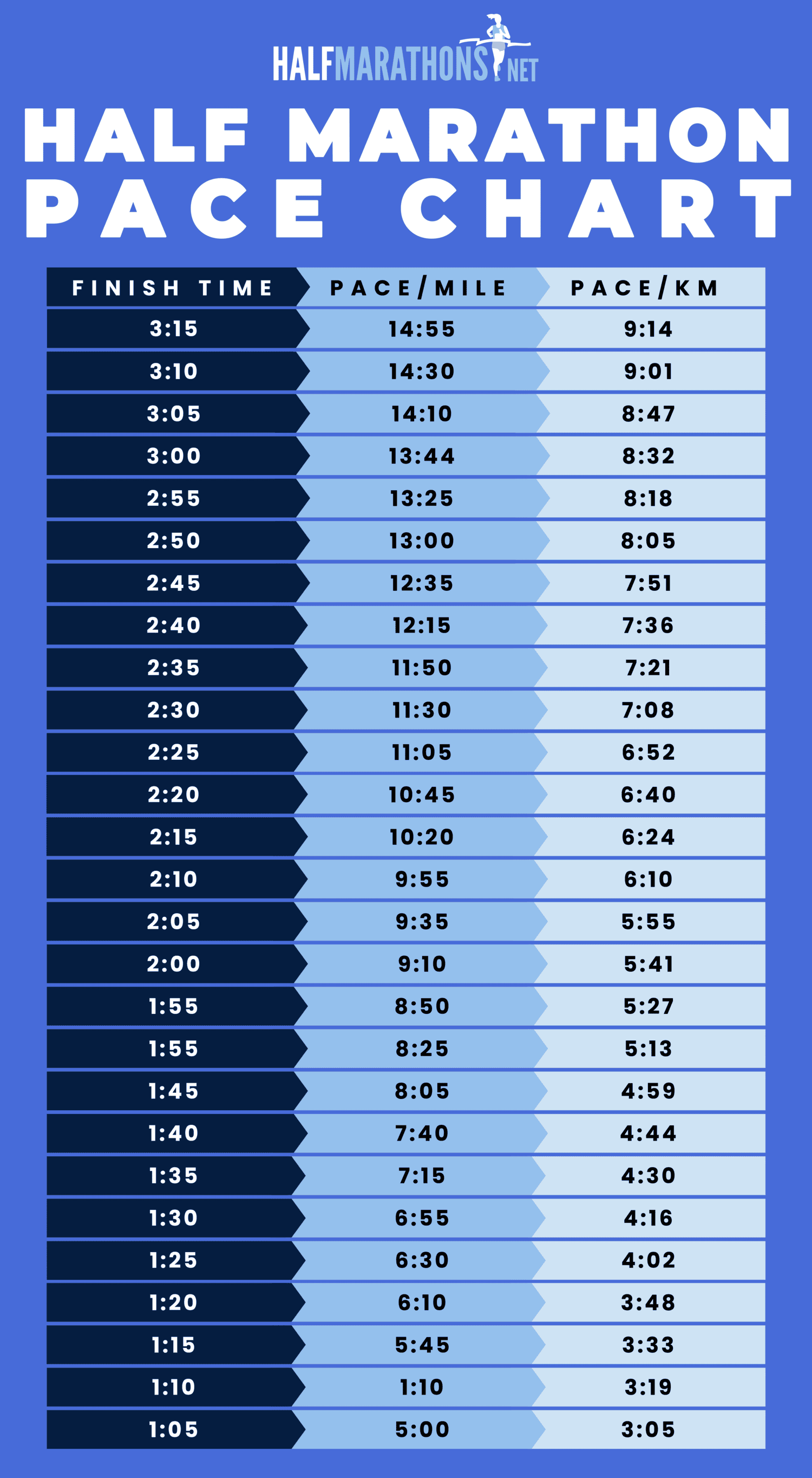You’re signed up for a half marathon and, whether it’s your first or you’re an experienced runner checking destination races off their bucket list, it’s smart to set a goal race time. But once you do, you need a way to achieve it. Enter: Your race pace.
Your race pace is your target running pace over the course of, in the case of the half marathon distance, 13.1 miles. Sticking to a certain speed over the course of your miles — called a pacing strategy — helps you to cross the finish line at your goal finish time.
Use our half marathon pace chart below to find your goal race time and required average running mile and kilometer pace.
How to Use a Half Marathon Pace Chart
Our half marathon pace chart is really easy to use. You just:
- Pick your goal half marathon time.
- Find the average target pace needed to achieve it, in miles or kilometers.
- Target this pace in your training runs.
We’ve also included estimated times for each milestone to help you stay on track.

The catch: You want to be realistic when choosing your goal time. For reference, the fastest half marathons were run by Jacob Kiplimo, who paced an average of 4:23.2 in Lisbon to hit his finish time of 57:31, and Letensebet Gidey, who paced an average of 4:47.7 in Valencia to hit her 62:52 finish time.
Find out more details on how to actually pace a half marathon once you have your goal in mind.
Picking a Half Marathon Goal Pace
Your goal finish time is entirely personal. And keep in mind: There is no wrong goal pace. The numbers are just there to keep you from burning too bright, too fast — that is, to help you properly allocate your energy levels so you can make it through a whole half marathon distance.
Ideally, you want to pick a time based on previous race results or a personal best from training runs. You should know what each pace feels like from your recent training — use this to help you choose.
If you don’t have a past race to use as a baseline, there are popular workouts like the Yasso 800 that may provide helpful benchmarks on a sustainable full marathon or half marathon race goal.
Should I Use a Pace Calculator?
Using a half marathon pace calculator allows you to find the average target pace to achieve your goal half marathon finish time. It’s much more accurate than just running and hoping for the best.





